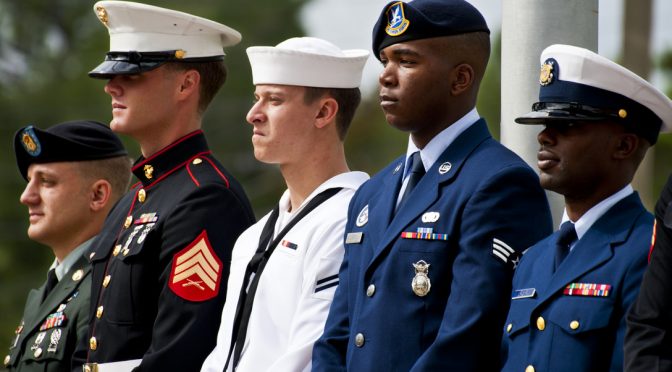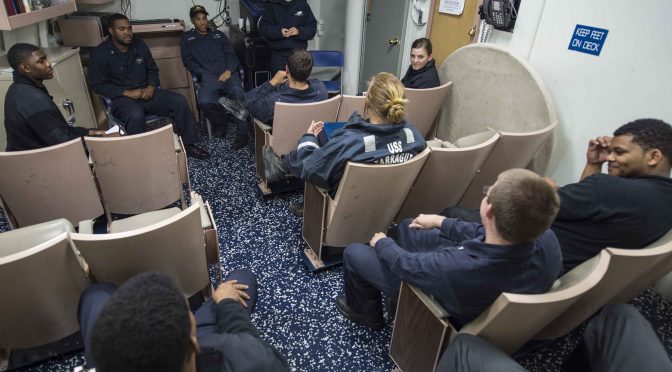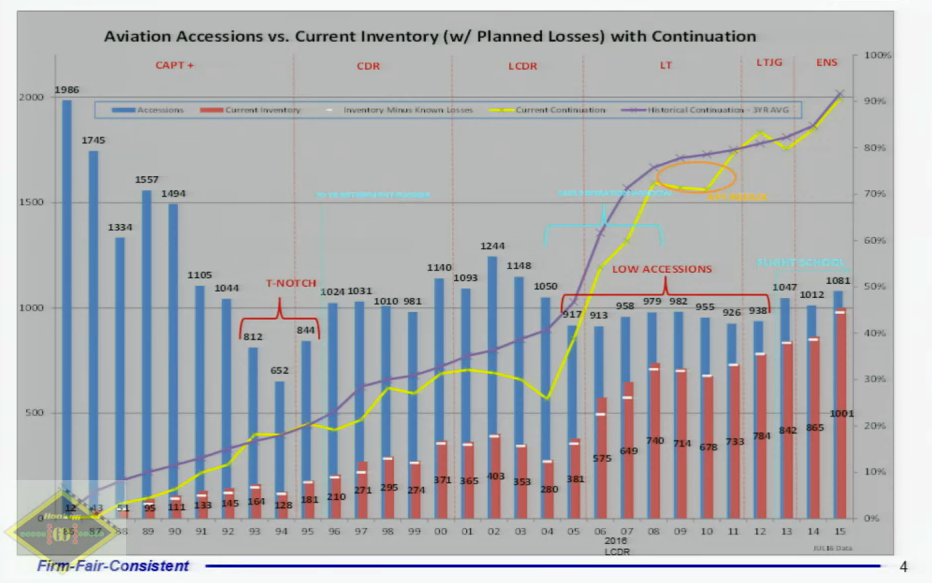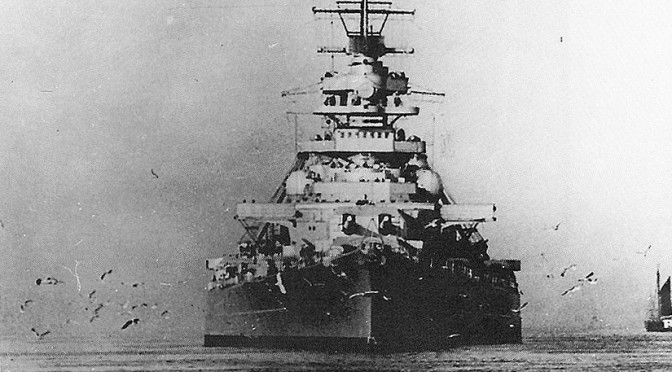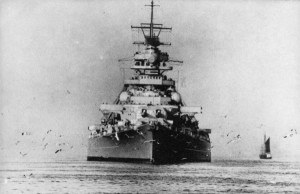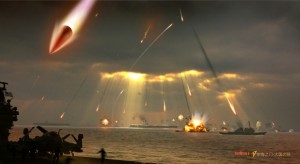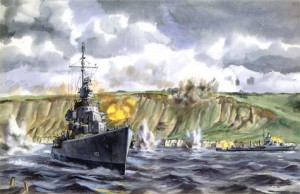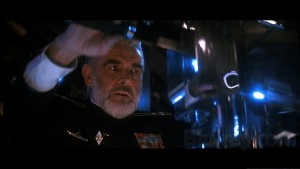By Christopher Nelson
This past fall, I had the chance to talk with editors Nate Finney and Ty Mayfield about their book, Redefining the Modern Military: The Intersection of Profession and Ethics.
From the publisher’s description: “Redefining the Modern Military expands upon and refines the ideas on the role of ethics and the profession in the 21st Century. The authors delve into whether Samuel Huntington and Morris Janowitz still ring true in the 21st century; whether training and continuing education play a role in defining a profession; and if there is a universal code of ethics required for the military as a profession.”
We talk about their book, social media and the profession, and later we dive into a conversation about Colonel “Ned Stark” (who recently was revealed to be Col. Jason Lamb) and why they think it’s bad for the military profession to write under a pseudonym.
Nelson: Thanks for joining me guys. How did the book idea come about and why this book now?
Mayfield: The book started as a conversation on social media with Dr. Pauline Shanks-Kaurin who was prepping for an ethics class when she was teaching at Pacific Lutheran University. She was just asking questions on Twitter about the profession, what it means, and who might be in the military profession.
That went around on Twitter. I was engaged in that initial conversation. Nate and I talked and the idea for something more came up so we talked with the rest of the editorial team and decided to run a series at The Strategy Bridge, trying to answer those questions. What is the profession? What is our profession and ethics, and the role of both of those things in our institutions?
We published almost 20 articles on the topic and they were all really well-received. Then, we circled back from that and began to have a conversation about if there was enough for a book and whether or not we could take this to the next step. We contacted about a dozen of the authors, ended up with 10 of them, and then picked up two more to write on very focused topics just to round out the book. They went back and expended those initial journal articles to chapter-length pieces.
Then we pitched the book and got picked up by U.S. Naval Institute Press. Here we are three years later looking at the publication of the book. This has been really interesting to see something go from a conversation on social media, to a web-based professional journal, to a hardcopy book. I think that’s the story that is really interesting about this book.
Nelson: That’s great.
Finney: I think it shows a very deliberate attempt by The Strategy Bridge to go through different mediums. We pulled a lot of our articles from social media, conversations we have on Twitter and Facebook, and people that are talking about something that’s interesting. Whether it’s us as individuals or editors at The Strategy Bridge, we’ll hit them up and say, “Hey, that would make a great article. Send it along.” That stuff happens all of the time.
The example of turning it into a series instead of a single article, and then deciding to turn it into a book, is a model that the Strategy Bridge may do from time to time as topics that are of interest to the profession continue to bubble up in conversation.
Nelson: Alright, well let’s get right into it then. An Air Force officer and an Army officer edited a book. What is your take on each of your respective services and what concerns do you have about the profession? What’s good, what’s bad? Particularly, for Ty, I know the Air Force Officer, Colonel “Ned Stark,” writing some pieces for War on the Rocks, grabbed attention with his concerns about the USAF.
Mayfield: I think the Air Force is a unique service as compared to the others. I think a big part of the profession is cultural identity, who you are as an institution. The Air Force, being the newest of those departments, I think we struggle with culture and identity a lot. There are times that you want to be very much different than the other services and focus on our specific domains, but then there is a pullback to a core professional identity that unites all of the services. I think there’s a real cultural identity conflict for the Air Force. How to be different enough to maintain your own identity, yet keep a finger on that touchstone as military professionals.
I’d like to talk about Ned Stark, later on. I think it’s a separate question altogether.
I’ll let Nate speak to the Army. The Army has done a lot of work in developing their own ethic and their professional identity, but what they have done in that process is develop an Army ethic and an Army profession. That, in some ways, I think walls them off from the other services, and it misses the larger professional identity that I think all the services should try and sort out.
The Air Force has followed that lead and it has established its own Profession of Arms Center of Excellence, which is now taking roadshow trips out to different bases and talking about the profession. It’s not theoretical, it’s more applied leadership; which is good and important, but it’s different than what the Army has done with its Center for the Army Profession and Leadership program up to this point. I think that’s a good segue back to Nate.
Nelson: Before we jump to Nate, really quick, what would you recommend to your service chief or other seniors in the Air Force? What needs to change or what would you suggest, as far the identity of your particular service? What would you do to improve the identity of the Air Force?
Mayfield: I think part of the recommendation here would actually be to model the approach off of what the Army has done, which is not, obviously, going to be something that’s particularly well-received; but I think the Army did it well. I think Dr. Don Snider’s book, The Future of the Army Profession, was the groundwork for the Army ethic and for this Army professional identity. It was the theoretical piece. It’s a big book, it’s really dense, it’s hard to approach; but the scholarship is there that laid the groundwork for the Army’s successful development and, for lack of a better word, the doctrinization of their ethic. I think that’s important and that’s probably what needs to be done in the Air Force, at some level.
Nelson: Nate, over to you. Army good and bad?
Finney: First, I’ll say I think the Army’s furthest along when it comes to developing their perspective on the profession and trying to figure out where they fit. The previous works that we use a foundation for Redefining the Modern Military are Janowitz and Huntington, in particular. They were, essentially, writing about soldiers coming out of the Korean War and World War II, but particularly the Korean War. Of course, they’re applicable to all the services, but really it was a focus on the soldiers in the Army coming out of those wars, and what it meant for land power, and its citizen soldiers.
As Ty was mentioning, Don Snider’s work of the 2000s was chartered by General Martin Dempsey (who also was kind enough to write the forward of our book) when he was the Training and Doctrine (TRADOC) commander, and then the Chief of Staff of the Army, and then the Chairman of the Joint Chiefs–all in pretty quick succession. As Ty mentioned, his focus was on the Army and he used Don Snider’s work and others to really push the profession, but also the Army ethic. He tried to convert that into a joint profession campaign on the profession and ethic when he became the Chairman. I don’t know how much it took hold. I think General Dempsey’s white paper on the profession, when he was the Chairman, is a good model for trying to have that conversation from a joint force perspective.
When it comes to the Army as a service – and what we can do better – I don’t honestly have a good answer. I think we largely get it right; we’ll never get it perfect. General Caslen, who retired out of West Point as the superintendent, really focused on character as a part of the profession and what types of characteristics our soldiers need to have to be professionals to embody that ethic.
I think from induction in West Point, then PME throughout a career, the Army does it pretty well, if a bit dry. I think General Milley and others have focused on “re-greening” the Army on what it’s like to fight large formations in a conventional conflict. Yes, there’s a tactical/technical piece to that, but I also think there’s a professional piece. Whether it’s trying to balance what we learned in Iraq and Afghanistan with where we need to go in the future and what that means for soldiers as professionals. It’s not perfect, nothing’s perfect, but I think the Army does it pretty well.
Nelson: I didn’t read Huntington until, I don’t know, maybe around the fourteen-year mark in the Navy. Do you think expectations are too high on the first ten years of your life in the service? You’re just trying to get the basics down and you don’t even know what the profession is or what it means, so do you think our expectations are too high for younger officers to have them really truly understand? They’re maybe not even committed to the profession. They haven’t even decided to say, “I’m in this for the profession.” What are your thoughts on this?
Mayfield: I think that’s a great question and that’s exactly why we wrote this book. When you pick up Huntington at your 14-year mark, that shouldn’t be the first time you’ve thought about the profession. I was at the Army War College last year, and I’m presented with Don Snider’s book, The Future of the Army Profession at the 19th year of my career, and I’m thinking “it’s too late to start this conversation; it’s too late to start thinking about this.” But at the same time, to your point, lieutenants, company grade officers, I don’t think they have enough exposure to the profession yet, and the development to really touch those documents; Don Snider’s work, or Huntington, or Janowitz, or any of that with any meaning or connection.
That’s what we tried to do with this book, with Redefining the Modern Military, is provide something to start with, a starting point that then preps you for that conversation to pick up Huntington, preps you to pick up Don Snider’s book. So that, when you get it in your 19th year, it’s not the first time you’ve thought about your role as a professional.
We used a multi-disciplinary approach in this book, so we have officers from all the branches of the service, we have academics, we have historians, we have people who are in civil service now, we have lawyers, we have former military officers who are now civilians.
I think there’s a focus on it being company-grade officers or senior company-grade officers or junior field-grade officers. I think that’s a really important niche because those are officers who are approaching this 14-year mark we’re talking about. They’re right at this transition and I think that’s where Don Snider would argue you become a professional.
You can be a member of the profession without being a professional. I think that’s the transition you’re trying to get to. This is the point that the question you’re asking, and Don Snider uses a term, “stewards of the profession” to define this. There’s a change in your approach to service and a change in your relationship with your institution.
I think for most of us, that probably happens at the command level. When you take command, be that in the Army, as the company-grade officer, as a captain company command; or in the Air Force, if your first command opportunity as an O-4 or an O-5, that’s a pivotal moment where you have to start looking back into your organization through a command lens that focuses your institution’s requirements and your institution’s desires and future.
The term, “company man,” it’s a bureaucratic term. It refers to a bureaucracy. These two things are in tension, and this is something that Dr. Snider talks a lot about. That tension between the bureaucracy and the profession. One is focused on effects, the other is focused on efficiencies. There’s a whole list of things that are in tension between these two institutions, and I think that’s why he uses the word, “steward”, and not “company man.” He uses the word, “steward” because stewards are people who do the care and feeding of the profession and that’s our role at this level as field grade officers. We have to become stewards of our professions to make sure that we teach our subordinates and those that come after us what’s important, because if we don’t teach them what’s important and why, it will evolve over time and people will lose focus.
It’s a long answer to your question, but I think that’s why we wrote this book; so that we have a stepping stone, so we’re not at the fourteen-year mark and just throwing Huntington at you and saying, “good luck.”
Also, to get to your question about when do you become a professional, it happens differently for all of us. I don’t think we always recognize it in the moment, but then, reflectively, we can see when our outlook changed. My second time in command here, I’m seeing that even more and I’m thinking more about that, about the future of my subordinates and their impact on the service. People want to leave their mark on the unit, but if you want to leave your mark on a service, on an institution, then it’s really through mentorship and development; you have to understand that your subordinates have much more longevity than you do.
Finney: Ty alluded to the fact that a profession is not an institution, it’s the people in the institution. As you get that transition into being a steward of the profession versus focused on the technical/tactical aspects as a junior-grade officer, you should probably not hand out Huntington and say, “hey guys, you need to learn this.” Instead, mid-grade and senior leaders should probably more embody the profession for their subordinates and embody those characteristics you want to see in professionals.
I look back, and sure I didn’t read Huntington as a lieutenant, but I could look back on my battalion commander, my battalion S3, the majors in my battalion, in the interactions they had with me and the way that they treated other people, were daily inculcating that profession in myself and my fellow junior officers.
While, intellectually, you’re not beating them over the head with the foundations of the profession, I think, at least in my experience, we certainly are focused on developing those professionals from the first moment they come in.
In my opinion, unfortunately, the way it’s built into PME, both leadership and the profession piece of it, it is almost like a lobotomy. It’s just, “here read these slides,” or “read the section, we’re not really going to talk about it,” so half the folks read it, half don’t. I think it’s less that we don’t do it, and instead that we do it poorly.
Nelson: I want to jump on social media because we started this conversation with the fact that your book was hatched on Twitter. And you’re both on social media quite frequently. How’s the profession doing on social media in the civ-mil sphere? Do either of you think we have an issue with service members being partisan when it’s clear that they identify themselves as military members in their profile?
Finney: I think the social media tools certainly put us in a place where it could become dangerous if we don’t self-regulate, but the beauty of being apart of a profession are professionals, like you, reaching out to people you know saying, “Hey, Jack that’s not something you should be saying in public. You want to have that conversation one-on-one over coffee or beers, that’s fine, but don’t put it on social media.” I certainly have seen the same thing. Honestly, I saw it more when I was on Facebook than I did on Twitter, and that might be the transitory nature of Twitter.
I think what it comes down to, is that it has to be about self-regulation. It’s peers, or if required superiors, coming in and saying, “Okay, you’re not supposed to be talking like that. Here’s why.” Have a good conversation about the profession. The other piece is, and I’m seeing more and more of this on Twitter these days, are senior leaders using social media in a positive way in order to help bolster the profession and provide an example.
Nelson: Are you worried if Twitter is trending in a bad way?
Finney: I don’t…at all. I personally think, in particular, I see a lot of great stuff coming from the Army. General Patrick Donahue, Ty knows and interacts with quite frequently, General Mick Ryan from Australia, senior leaders who are using it for more than just a PAO push where they’re just pushing their agenda. They are interacting with other human beings. They are shaping what people are reading or thinking about through what they’re posting, as well as interacting with people across the board from cadets all the way up. In order to have those professional discussions, even if it isn’t “here’s Huntington,” they’re getting to “let’s have a conversation as professionals.” That’s essentially what’s happening and what we need on social media.
Nelson: I guess what I’m alluding to is the retired admirals and generals. For example, retired admirals writing opinion pieces on political topics–like the McRaven op-ed that was published last year. There are two completely different thoughts on this. Some admirals and generals remain quiet, and urge others to do the same–some, obviously, do not. What are your thoughts?
Mayfield: Let me dip back into the social media question, and then I’ll circle and address the McRaven piece. I tend to agree with Nate on the social media piece. I think senior leaders in the military are late to the game on social media, and I think a lot of it is because they don’t understand it.
There’s always been an effort to manage the narrative of our senior leaders. That’s why they impose restrictions on their public affairs officers–who they also don’t understand or trust–and spokesmen, everything. They get talking points, everything is very scripted, and when you put a hand-held, you put a phone in a four star’s hand, and he’s got an hour to burn at the airport that makes a lot of people uncomfortable. I think it can be done well, but I think the access, immediacy, and unconstrained environment made our senior leaders uncomfortable to do it.
Social media is social, you can’t just push the thing you want, it won’t get picked up. That’s not how it works, it has to be interaction. Twitter, in particular, I think is a really good tool for those quick interactions that can fall into the realm of mentoring, and you can build relationships that last long term. I think that’s the thing General Mick Ryan out of Australia does really well, General Patrick Donahue does this really well too.
Those short interactions over time, and this falls into what Ray Kimball, one of the chapters in our book, talks about and that’s mentoring. That mentoring does not have to be done within your chain of command. Your rater may not be the right mentor for you. I think social media gives junior officers an opportunity to engage with an officer of their choice, who they want to be a mentor. It has to be a mutually agreed upon relationship.
I count General Ryan and I count General Donahue both as mentors at this point in time. I’ve had enough interactions with them. We haven’t always agreed and that’s okay. That’s the other thing we have to get to in social media, you have to figure out how to do that. How to disagree publicly with each other, with subordinates, with superiors. There’s that fine line in the profession.
To the point about the politics, I’ll just leave it at this, I think the profession must be self-policing. It’s got to be self-correcting, otherwise what you’re going to get is congressionally-mandated reporting requirements or congressionally-mandated direction on what you can and cannot do. Those limitations are an infringement on your autonomy as a professional. If you’re not self-policing, someone else will police you. That’s where we have a role to address our peers when we see this stuff. Some of them are not reconcilable, and I’m a little bit worried about that, frankly, as a professional.
We come into the service with our own ethics, and our own morals, and our own values, and we have to put all those aside. We have to assume the ethics and the morals and the values of our service, and one of those is we are an apolitical institution. There’s tension there. People have deeply-held political beliefs and we can all agree on that, but the service doesn’t. That’s the core the profession.
The McRaven piece, I didn’t read it. I just stay away from the op-ed stuff. I don’t find it of much utility and I say that getting ready to write an article, maybe an op-ed, so I recognize the tension in my own statement. To be fair, I’ve been getting ready to write this op-ed for six months because I just don’t want to do it. I’m trying to find a better way to approach the problem than meeting him on his own terms.
Nelson: What’s the op-ed on?
Mayfield: I want to talk about Ned Stark. I want to talk about why I think Ned Stark is wrong, frankly. He might have good ideas, but I think the idea is not correct. It’s not a good pitch.
I didn’t read the McRaven piece, so I’ll have to defer to Nate to answer on that, but I’m looking forward to talking about Ned Stark because I just wrote it on my white board before we sat down.
Nelson: Excellent, okay.
Finney: Let me re-attack the Admiral McRaven stuff, and then we’ll go straight to Ned Stark. I’ll let you have that one completely, Ty. Other than having read it and then you and I having some conversations over Twitter, I have no bone in that fight, so I’ll leave that to you. The McRaven retired general officer piece…
Nelson: This is not a new phenomenon, right?
Finney: No, absolutely not in any way, shape, or form. The “revolt of the admirals” and all that stuff, even earlier than that. Senior leaders who put out op-eds, for the most part, including, in my opinion, McRaven, very much weighed what they were going to say and whether they were going to say anything or whether it was going to be of a benefit to their profession and to the people that they were standing up for, versus the detriment of a retired officer playing into politics.
Whether you agree with it or not, he didn’t do it in order to harm the profession. He did it to enhance the profession and try and uphold a norm. I think that is generally the case; some obviously being more political than others. There is nothing against those in our profession, particularly those who have retired, standing up for things that they believe in the public press.
The issue is the knock-on effects to the profession and, in particular, the civ-mil relationships going forward from somebody standing up and doing something like that. I think the professionals weighing into these types of conversations weigh that very heavily, and have decided that it makes more sense for them to speak out than not; and that whatever detrimental effects will come from it, will be minor compared to whatever benefits they think that they receive.
Finney: Let’s talk about Ned Stark.
Nelson: So for background, “Ned Stark” is a pseudonym for a senior USAF Colonel (who was revealed to be Col. Jason Lamb). War on the Rocks granted him a (rare) pseudonym out of concern that his writing might endanger his professional career. He has written numerous pieces for War on the Rocks outlining issues with the Air Force. He got the attention of the Chief of the Air Force, who asked “Ned” to come work for him. So, Ty, what’s wrong with Ned Stark and his approach?
Mayfield: I read Stark’s initial piece in the Air Force Times, begrudgingly, after I see everybody talking about it. I read it, and I think what frustrates me with Ned Stark is that he doesn’t tell us anything we don’t already know as a profession.
It was the approach and the use of a pseudonym that really frustrates me because even if I agree with Ned Stark, I don’t know who he is and I don’t know how to help him change the service. His focus is on positional leadership, not relational leadership. There’s no way to have a relationship with Ned Stark. I can’t help him achieve what it is that he wants to get done, which, frankly, are things I want to get done, too.
There’s a level of hypocrisy in his use of a pseudonym that really touched a nerve with me. His own self-identification as one of these high performing officers who gets pushed along whether they’re ready or not because they have access to general officers and they have the right things in their records, and whether or not they’re ready for leadership or not, these guys are pulled through the system. He’s railing against this, stating “that’s not the way the Air Force should go,” but he’s one of them.
Frankly, I don’t understand what career risks a colonel in the United States Air Force faces. He’s a colonel, in the Air Force, it’s right at one percent of the total force, so what are we protecting Ned Stark from? What is Ned Stark protecting himself from? He’s asking the same process which built him, which he’s railing against, to continue to protect him, and I, frankly, I can’t get behind that. I was disappointed in him. Disappointed it got published, disappointed that it drew so much attention.
Nelson: What if it’s just, frankly, brilliant that his pseudonym generates this amazing amount of intrigue? In the cacophony of voices, of the many people writing about their concerns and issues with their military service, it’s this unknown colonel who breaks through to touch a nerve?
Mayfield: Here’s the question, and this was something that when I was having this conversation on Twitter, Rich Brennan actually brought up. This is his tweet, “The point isn’t the validity of the argument, but the strength of character. If the problem’s so severe, then, as a senior officer, you should be willing to stand up for what you believe in. Put something at risk to accomplish the change you want to see.”
I have a hard time buying the brilliant intrigue approach. Now, he’s got General Goldfein’s attention, so maybe your argument is that it worked. I read General Goldfein’s piece on War on the Rocks and it’s like, “Ned, I’d love to have you on my team,” and that makes me want to bang my head on a desk because Ned is already on the Chief of Staff of the Air Force’s team, he’s in the Air Force. How is he not already on the team? We can’t look Ned up in the global email address book, and start working his orders because Ned Stark is a fabrication and he’s not helping anyone.
There’s the whole piece about him essentially benefiting from the hypocrisy by being offered a job by the Chief. It doesn’t support guys, like you, who write under your own name, other Air Force officers who are focused on bettering the profession slowly but surely, versus moaning on War on the Rocks under a pseudonym. That’s not helping anyone. It’s not responsible, it’s not authentic, and it’s not professional.
Finney: It’s the incentives. You’re going to incentivize your soldiers in an adverse manner. It’s going to take away from their character, not build up their character in the profession.
Nelson: He apparently passed on the opportunity to work for the Chief of the Air Force. But do you think he would have even gotten that offer he hadn’t written the op-ed, or if he didn’t use a pseudonym?
Finney: I think it’s more on the hypocrisy of “senior leaders need to stand up and change their service for the better, but I’m going to use a pseudonym because I don’t want to stand up and do the same thing.”
Then, the arrogance of choosing Ned Stark, like “I’m sacrificing myself for the good of the service.” No, you’re not. You’re using a pseudonym.
Nelson: This is a good discussion. I think it’s a fascinating conversation.
Mayfield: I think there’s a lot of tension here. I don’t think that Ned’s Stark’s peers know who Ned Stark is. Ned Stark is setting himself apart from his peers in a way that’s going to be really hard to reconcile under his true name.
Perhaps I’m reading too much into this and I’ll acknowledge that I’m on one side of this issue. I went through the same thing when I started running my own blog. I asked this question, “Do I write under a pseudonym, or do I write in my true name?” and I went to my mentors and my professors, I talked to my peers, and I decided to do it in true name which put a lot of checks on me.
To Nate’s point about the use of pseudonyms. We don’t allow the use of pseudonyms on the Strategy Bridge anymore and that was an editorial decision. We also don’t write op-eds, we don’t publish op-eds, so we get those and we send them to other outlets. We don’t publish op-eds, that’s just our position, because what we want is a fact-based, cited, academically-approached argument that removes emotion and the personal positions.
Nelson: Where were you going to publish your rebuttal to the Ned Stark’s piece? I’m sure there’s some emotion behind it, you’re very passionate about your opinion on Ned Stark.
Mayfield: What I want to do is address it through the lens of a conversation about our profession, and about the status of it, and about us being self-policing, and it being a goal of lifelong learning and mentorship and leadership; and it’s hard to do those things from behind a curtain. I’m not saying it can’t be done, I just think there’s a better approach to it.
We started this conversation by talking about the status of our profession. I don’t think Ned Stark is advancing our profession.
Nelson: Let’s transition to the personal a little bit. I know Nate’s a father. Ty, I don’t know if you have kids or not. But neither of you shut off when you go home – the profession comes home with you. What are things, Nate, as you’re a father, character things that you instill in your children that the profession’s shaped you; and vice versa? How does your profession affect your personal life? And how does your personal life affect the profession?
Finney: That’s a good question, it’s interesting. I don’t know if the profession has affected my personal approach to life, the way that I live my life, and the way that I raise my kids, but I assume it has.
I think a better way to look at it, maybe, is by my children’s choices. My 15-year-old daughter chose to join the sea cadets program here in Hawaii. She’s always been a great kid, very smart, very respectful. She’s always wanted to be in the military; to be like her dad and be in the military. When she joined sea cadets, I could see that transformation as she started putting on the uniform, as she started understanding what being in sea cadets and being in the Navy was like. Her respect for others increased, her responsibility to get up and get things done and to focus on school work for sea cadets, and even outside of sea cadets, just getting her school work done, everything. All of that increased as she was a part of sea cadets. Part of that is her getting older, but I think part of that is being a part an organization, a team, a group of people who has certain standards, has certain expectations, and having to live up to those.
I think most of those things were there in our household. My dad was in the Navy. Got out right before I was born, but he carried that through his life. My kids have seen me go into work on Saturdays or late at night, and taking the approach that, “Hey, that’s what I do. That’s my job, that’s what I need to go do.” Deployments, same thing. This understanding of what the profession is, what living up to standards and expectations and being a part of a team is – I think all of those things come home from work. I certainly take aspects of my home life into work. Respect for others. All these things I would like to see in my daughters, I try and model those. Whether I’m good at it or not. Ty, you have any thoughts on that?
Mayfield: Yes, I think it’s an interesting question. I don’t have kids, so I have a different outlook on that; but I think what this question raises, for me, is the separation of personally-held values and beliefs from those of the institution.
We are the sum of our experiences. I grew up in a military family. I’m sure that influenced my own decisions, absolutely it did; but that’s the challenge that we face as military professionals is putting aside how we, Nate’s example, how he raises his kids. People that are under your supervision or under your leadership are not your children, they’re members of the same institution that you are.
We all agree that we want our kids to grow up and live long and full lives, but as members of the profession that’s not the outcome that we’re responsible to pursue. Sometimes, personal sacrifice is required to achieve mission accomplishment–and that’s not just us as professionals, but the potential requirement to sacrifice others who we lead as well. This is the concept of unlimited liability–it’s unique to our profession. In the end, effectiveness, mission accomplishment is what we’re charged with and that could very well come at the cost of people’s lives. It’s one of those unique aspects of our institution, and that’s a professional challenge. To acknowledge those things that you hold dear and believe, personally and to be willing to set them aside to advance the cause of your profession.
Think about Nate’s daughter’s change in behavior when putting on a uniform. The uniform is that exterior example. We act differently in civilian clothes than we do in our uniform. It changes how you walk across the parking lot. It changes how you interact with people. You can’t deny that it changes people. I’ve spent a good part of my professional career as a field-grade officer, actually, in civilian clothes, in a suit and tie; and it changes how people approach you, interact with you. Believe me, it changes things. That was a real shock for me.
I should have said our manifestation of our values and our ethic and how we approach people as professionals, so I think that’s a really important point to make. It’s a difficult transition, it’s a difficult thing to do; and the further along you go, the more you have to be very clear about what your personal desires are, what the requirements are because there are larger implications.
Nelson: Lastly, I’ll turn over to you guys for any last thoughts or words you want to say to close out our discussion.
Finney: Just to get back to the book, Ty mentioned we had many different perspectives from the team that wrote Redefining. Authors included lawyers, uniformed practitioners, folks from other countries like Sweden, Australia, the UK. The beauty of the book project was, at least for me, working with that diverse group of people and trying to weave all of those threads throughout the book. It just showed how some of the more important aspects of the profession are not just across the services, but it’s also across the national security realm.
While everybody views the profession differently, maybe it’s manifested differently in the different services in different militaries, those threads are all there. They were captured well by Huntington, Janowitz, and others, and I think as we move into the 21st Century and we’re trying to see if there’s a different character of war, and if the way we conduct conflict in the future is going to be different, does that mean our profession needs to change as well?
Nelson: Ty, closing thoughts?
Mayfield: First of all, I appreciate your time and the opportunity to discuss the profession and to talk a little bit about the book. I think it’s an important time, and this goes back to your very first question about why this book is important and why now. History tells us that the profession goes through cycles. We have a prolonged conflict, we have a peace pause, this period of reflection, introspection, and then we redevelop and redefine ourselves, and then we go forward again. It’s cyclical.
Huntington and Janowitz wrote at the end of the Korean War catastrophe. That set the stage going into Vietnam, and then we have the all-volunteer force that comes out of that. The all-volunteer force has now been at war for two decades without respite, and I think that the time is now for this introspection, this reflection to occur.
Dr. Snider’s book came out early 2000s, the ideas are foundationally sound, but the officers which are now practicing these ideas in the profession and this idea of an ethic have changed. We’ve come to the table with a new generation of officers and a new generation of enlisted personnel, all volunteers, which I think is unprecedented and extremely important; and I think the time is now for us to begin to redefine as we move into the role as stewards and leaders of our profession, to set the groundwork for what we want the profession to be going forward. That’s the answer to your question about why this book and why now.
We hope to see this book out there at ROTC programs, at commissioning programs, at company-grade officer education, and in the civilian community as well because it’s essential to our role as well as our constituents, to all those Americans represented by the Constitution. I am really excited about the book, but really I’m excited about the conversation; and I’m looking forward to the points of agreement, but most importantly, I’m looking forward to continuing the conversation. I think that’s the essential role, that’s the thing we have to do. We have to start the conversation or somebody will start it for us.
Nelson: Thanks guys, great talking with you. All the best.
Nathan K. Finney is an officer in the U.S. Army with a focus on planning and strategy. He is also a founder of three non-profits – The Strategy Bridge, the Military Writers Guild, and the Defense Entrepreneurs Forum – and has been a visiting fellow at the Australian Strategic Policy Institute, a term member at the Council on Foreign Relations, a Non-Resident Fellow of the Daniel K. Inouye Asia-Pacific Center for Security Studies, and a Non-Resident Fellow at the Modern War Institute at West Point. Nathan is a doctoral student in history at Duke University and holds masters degrees in Public Administration from Harvard University and the University of Kansas, as well as a B.A. in Anthropology from the University of Arizona. You can find Nathan on Twitter @nkfinney.
Tyrell O. Mayfield is an officer in the U.S. Air Force and a co-founder and board member of the non-profit The Strategy Bridge. Ty has published photography and written work in a number of online forums, magazines, newspapers, and peer-reviewed journals. Ty is a graduate of the Naval Postgraduate School and the U.S. Army War College and holds masters degrees in International Relations, National Security Studies, and Strategic Art. Ty is currently writing a memoir about his time in Kabul. You can find Ty on twitter @tyrellmayfield.
Christopher Nelson is an intelligence officer stationed at the Office of Naval Intelligence in Suitland, MD. He is a graduate of the US Naval War College and the Navy’s Maritime Advanced Warfighting School. He is also a regular contributor to CIMSEC. The views here are his own and do not necessarily reflect those of the Department of Defense or the U.S. Navy.
Featured Image: Joint-service honor guard members representing all five military services stand in front of the audience before the outdoor portion of the POW/MIA ceremony Sept. 16 at the Air Force Armament Museum. The ceremony paid tribute to those military members who have yet to return home from defending America. The event was hosted by the 46th Test Wing and featured guest speakers, honor guard procedures and a flyover by the 53rd Wing. (U.S. Air Force photo/Samuel King Jr.)

